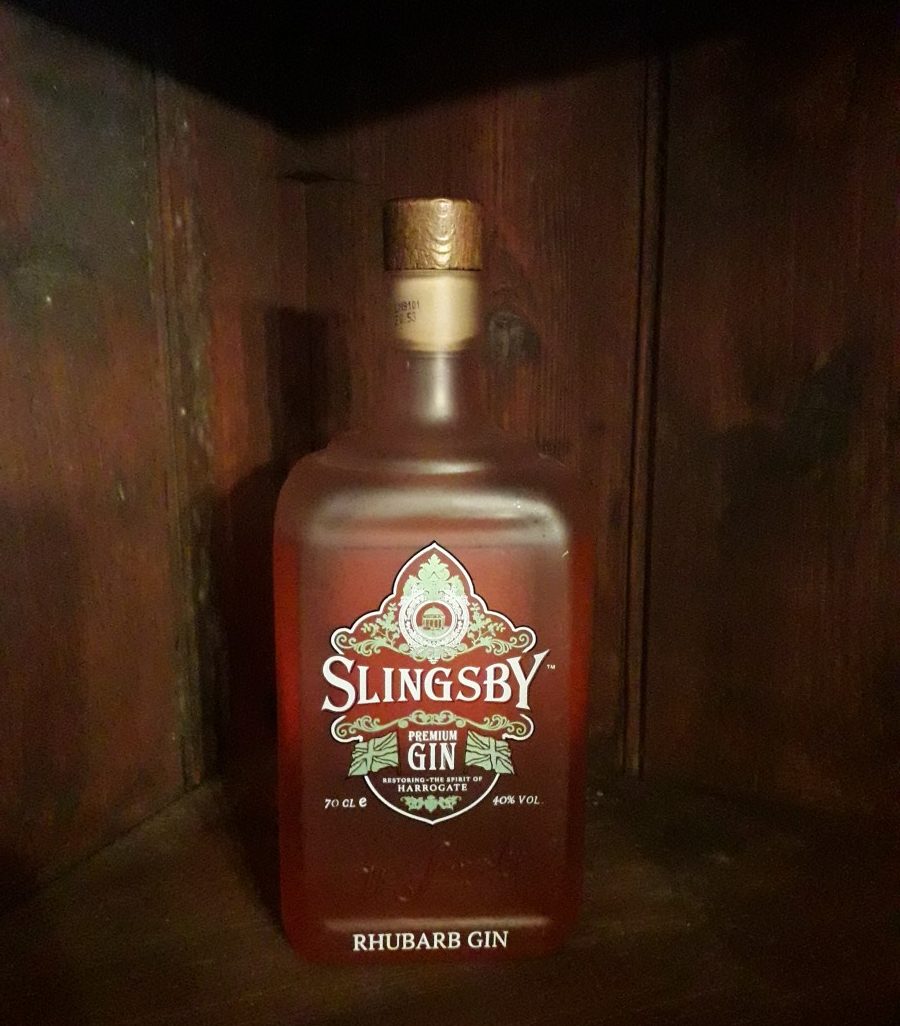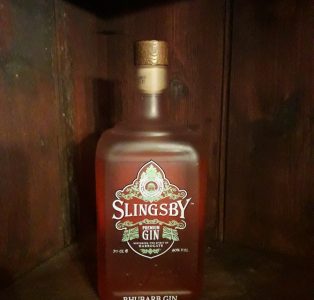I think if am asked what is my favourite spirit drink it would probably be gin. No, not due the present mania, whereby everybody is making the stuff – in kitchens, potting sheds and even a redundant camper van, but, due to a long-serving apprenticeship.
The genesis of my gin-liking probably goes back to my late dear grandparents, who to be frank imbibed a bit too much than was good for them. In fact Granny could get though a fair bit, with disastrous consequences – particularly if attempting to do the Sunday roast at the same time! I used to sneak a sip or two when staying with them so, alarmingly, this could have been from aged 6 onwards! In those days the range was probably limited to Gordons, Gilbeys, and Beefeater – all with Schweppes tonic.
My next fond gin memories were connected to a much-liked client, Adrian Bailey Henshaw. The story is worth some detail, so bear with me!
Adrian was a bachelor who came from a very well-off family – their fortune being made from railway engineering. Adrian worked in the family firm and lived in a pretty huge pile, Boyne Hill House near Wakefield. It was an estate with land and a farm, along with servants and workers. However, disaster struck in the mid Seventies when his father died prematurely, leaving huge death duties. The family decamped to what had been the estate farmhouse (an only slightly less impressive property) which was owned by Adrian’s brother.

The main house had to be sold and duly was – to a charity catering for disabled people. This required certain safety modifications, including ripping out mahogany doors and other such fittings. The story then goes that Adrian’s mother happened upon the workmen heaping all of this onto a huge bonfire, prompting an apoplectic fit. For Adrian’s mother this was the final straw, so she decreed that they could not remain in the county any longer! In due course this led Adrian, his mother, the housekeeper, horses and a quantity of large antique furniture (including a huge wooden fireplace surround saved from destruction) down to Norfolk. Clearly there were reasonable funds left from the catastrophe as quite a large house was purchased , complete with a paddock to cater for Adrian’s mother’s horse-riding activities.
When I first met Adrian in the late Nineties most of his charges had departed – except for the by now infirm housekeeper who he looked after. However, by the next year she too had passed away. He had also moved from the original house to a slightly smaller one on the north Norfolk coast at Blakeney.
I would visit Adrian most years at his lovely home, and in fact would stay for a few days. It had a very attractive and large garden complete with some tame pheasants which he would feed with grain each morning. I asked Adrian why he had not opted for peacocks. He replied that peacocks could be noisy, plus, if the pheasants upset him he could always eat them!
After a few years and on one of my visits, Adrian asked what we were doing for a holiday that year. I said that no plans had been made yet. He then asked if we would consider “house sitting” for him for a week or so whilst he visited his brother in Wakefield – apparently being an annual event. One reason was that his home contained quite a lot of antiques – including silver, but there was also the pheasants to be looked after. I discussed the matter with my wife as I was a little uneasy that the arrangement could cause a professional conflict – particularly if something went wrong, plus Adrian had refused any payment whatsoever. In the end we decided to accept as it was after all a mutually beneficial arrangement. To further reduce any charge of “taking advantage of a client”, we would treat Adrian to a nice meal out and make up a hamper for him. In the end we had a lovely holiday with glorious weather and all was well.
My usual visits tended to follow a similar format. I would pitch up at about 3 pm and receive a cup of tea. I would then have the wearisome task of reviewing Adrian’s investment portfolio, which was constantly battered by his outgoings exceeding income (he had nothing by way of a company pension of course) and not helped by a continued penchant for nice clothes, shoes, food, wine and cigarettes. This never seemed to faze him much though as I am sure he thought I had magical powers that would keep him going ad infinitum. However, his occasional calls to me requesting capital urgently (to change the car or pay the periodic heating oil bill) caused me ongoing angst. After this, and bang on 6 pm , the squeaking wheels of a drinks trolley could be heard – either making its way into the drawing room, or rumbling over the patio – depending on weather conditions. Once in position and comfortably settled, a fairly standard Gordons was knocked up and we would then proceed to bemoan the state of society and the diminishing of all things British. This would continue until he deemed his signature dish – usually game stew (but sometimes a fish kedgeree), was ready. This varied in quality, being determined on what damage we were doing to the gin bottle (invariably at the two thirds gone level) which could render the meal overcooked! Adrian’s great phrase after he had drained his glass, was to say in his plummy voice “well, what do you know, the tides gone out” and, with a twinkle in his eye a refill would ensue. The next day we would go out for a drive and usually have lunch at a fresh seafood cafe not far from Blakeney. It was all very civilised!
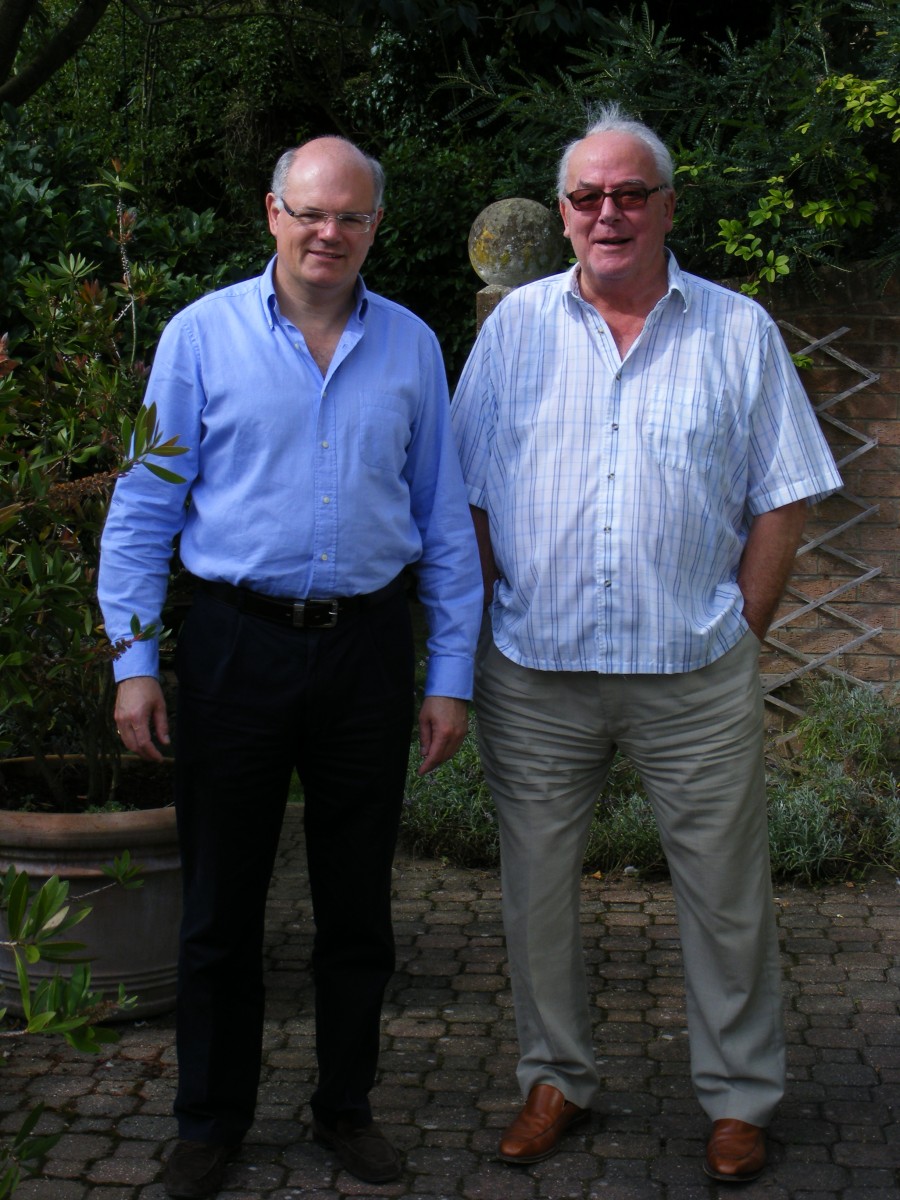
I knew Adrian for over 15 years and was fond of him and I think it was reciprocal. At one point he asked if I would be his executor in lieu of his nephew who he was somewhat ambivalent about. I was not keen on this, being his financial adviser, but happily the idea just withered. Adrian was also fond of my son Robert who he had met on several occasions. I think all this was partly due to the fact that he had had no children and had little meaningful contact with his only close relatives, a nephew and niece.
Sadly, in the end, a lifetime of chain smoking (and probably gin) took its toll on Adrian. His breathing deteriorated along with attendant heart issues. He had actually given up smoking a few years before and impressively went from some 40 a day to zero instantly – somewhat proving that mind over matter is possible! He had by now already moved to a nice but smaller property in Holt – the previous garden had become a burden with his health, but also some equity was needed to keep him going financially. However, it was all a bit too late as one day in November 2012, at age 79, he had a heart attack at home. The paramedics got him going, but In the ambulance en route to hospital he suffered another attack. Again they revived him, but then he had another. At that point he told them that if it occurred again not to bother any more – he had had enough. Another attack did occur, so, that was that.
I was only advised of the tragedy a couple of months later when the nephew contacted me about selling his investments. Of course this came as a great shock as I had last spoken to Adrian in the September and was to call back in early October to finalise a visit. However, a major drama with my own mother’s health intervened and I never called him – something I still feel guilty about. Of course, I missed his funeral too and I was extremely upset about that as I felt that his relatives could have contacted me. That said, if they had not bothered with him much then maybe they were unaware that we were more like friends. Anyway, when drinking, I have adopted Adrian’s “tide out” phrase – so I do remember him quite frequently!
OK, and to get back on track! Before the current and trendy gin explosion, I think my go-to bottle was Bombay Sapphire. A really nice flavour and that lovely turquoise blue bottle too. This was complimented later by a few new style of gins (with new flavours) and Hendricks was probably one of the first in 1999. Then, around 5 years ago I came across another brand – mainly in error really. I had booked a cigar meal evening at the Hotel Du Vin in Harrogate – but it all went a bit wrong. I had been to a few of these before and frankly they were damn good evenings, with a carefully chosen four course meal, starting with aperitifs, then wine and brandy. The evening would also be punctuated with pauses in order to accommodate the sampling of several cigars – with expertise on hand from Hunters & Frankau (the official UK Cuban cigar importer) and sometimes with their kind and fantastically knowledgeable sales director Simon Chase. Anyway, on this particular occasion I pitched up at the hotel on the Friday afternoon in good humour. This quickly evaporated as I was told that the cigar event had been on the previous evening! I was naturally pretty annoyed, however, the hotel admitted that they had messed up and to make amends upgraded my room and knocked a chunk off the rate. A little later I was approached by the hotel’s events manager, enquiring whether I liked gin, and if so, would I like to attend a gin evening that a local producer, Slingsby, was hosting that very evening. Well, as I had of course nothing better to do and I liked gin, yes please!
The event started at about 7 pm if I recall, so, after a lengthy soaking in my luxury room’s stand alone bath, I made my way downstairs. I was greeted by one of Slingsby’s founders Mike Carthy, and given a large balloon type glass. This I was told contained their signature rhubarb gin and well, it was delicious. The other ingredients were; Fevertree elderflower tonic, raspberries, mint leaves, a lime chunk and ice.
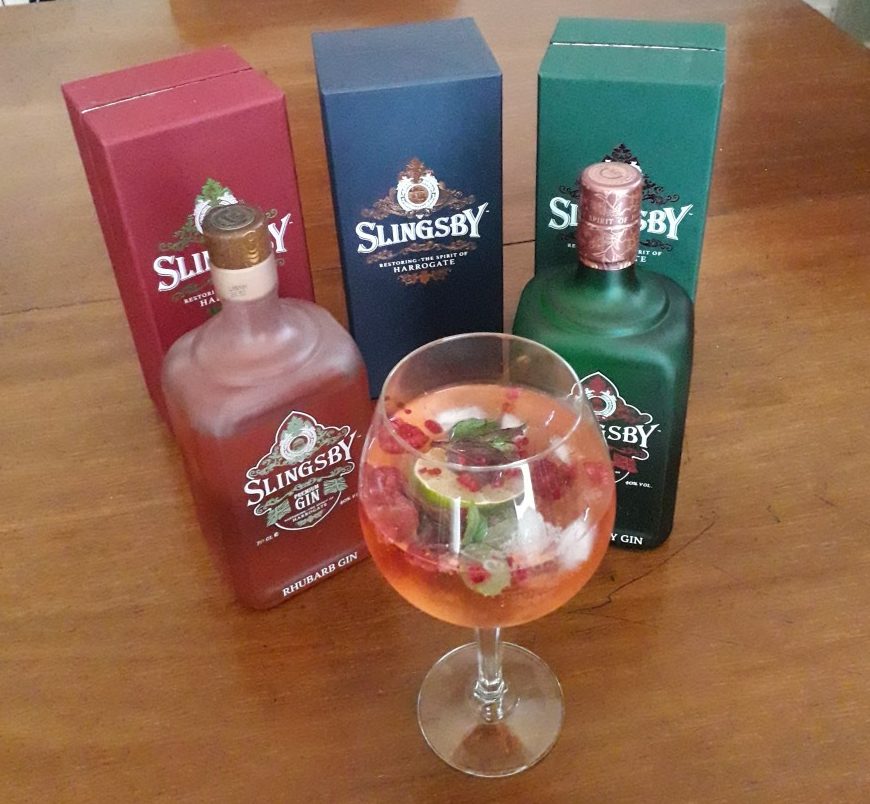
There were I guess some 5 tables, with maybe 6 souls on each. On the tables were various bottles of clear liquids, gins and tonics. We were then given a most interesting history of gin, which in fact originated in Holland in the 1600s as jenever (juniper) where a version was given to soldiers before battle to promote resolve – hence the term Dutch Courage. This practice was then adopted in Britain in the early 1700s, where it was called geneva but then shortened to gin. There followed by a burst of home distilling which then became the tipple of the lower classes – mainly women. However, most of this output was pretty dangerous and there was an epidemic of alcoholic poisoning and blindness – leading to the term Mother’s Ruin. In an attempt to halt this, the government decreed that gin could only be manufactured with a license which they made deliberately very expensive. Punishment for non-compliance was severe.
Anyway, the Slingsby evening was a great success. We had learnt about the history of gin, and had been shown how to mix some standards and cocktails. I frankly do not recall how much alcohol was consumed that evening, but it was a lot!
Since that first experience many more flavours have been created, including; whiskey, gooseberry, marmalade and Christmas pudding! Where possible all fruit is sourced locally, as are the plants and herbs that make up the botanicals, plus the spring water. The only element which is not are the juniper berries which come from Eastern Europe, as they are apparently superior there. A small quantity of gin is distilled in Harrogate (mainly for demonstration purposes) in some lovely old copper stills, but as the building cannot be altered to facilitate greater production, the bulk is done at the Langley distillery in Birmingham. One day though this may too be done in Harrogate. And the name Slingsby? Well, in 1571, William Slingsby discovered the Tewit Well and recognised the “healing” properties of the water. He promoted this and people flocked to “take the water” making Harrogate the popular spa town it is today!
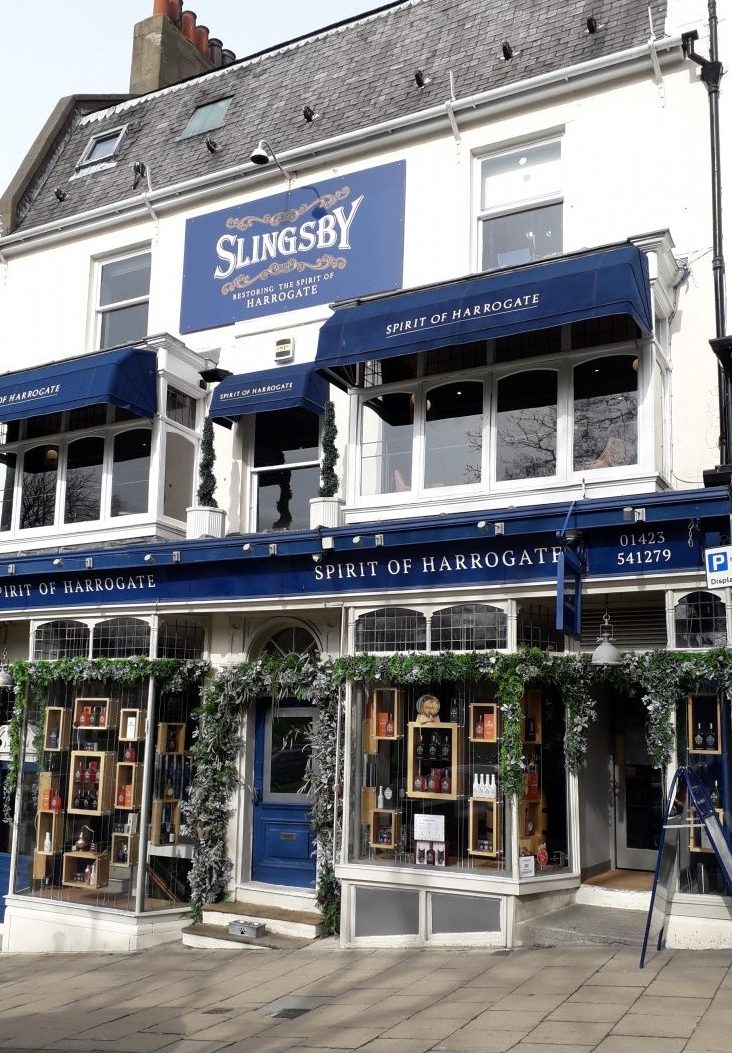
Recently I was passing through Harrogate and as usual I called in to restock and investigate new flavours. One that was quite new – and a limited edition for Christmas, was the previously mentioned Christmas pudding flavour! So nice was this that I invested in a bottle, along with some some rhubarb staples.
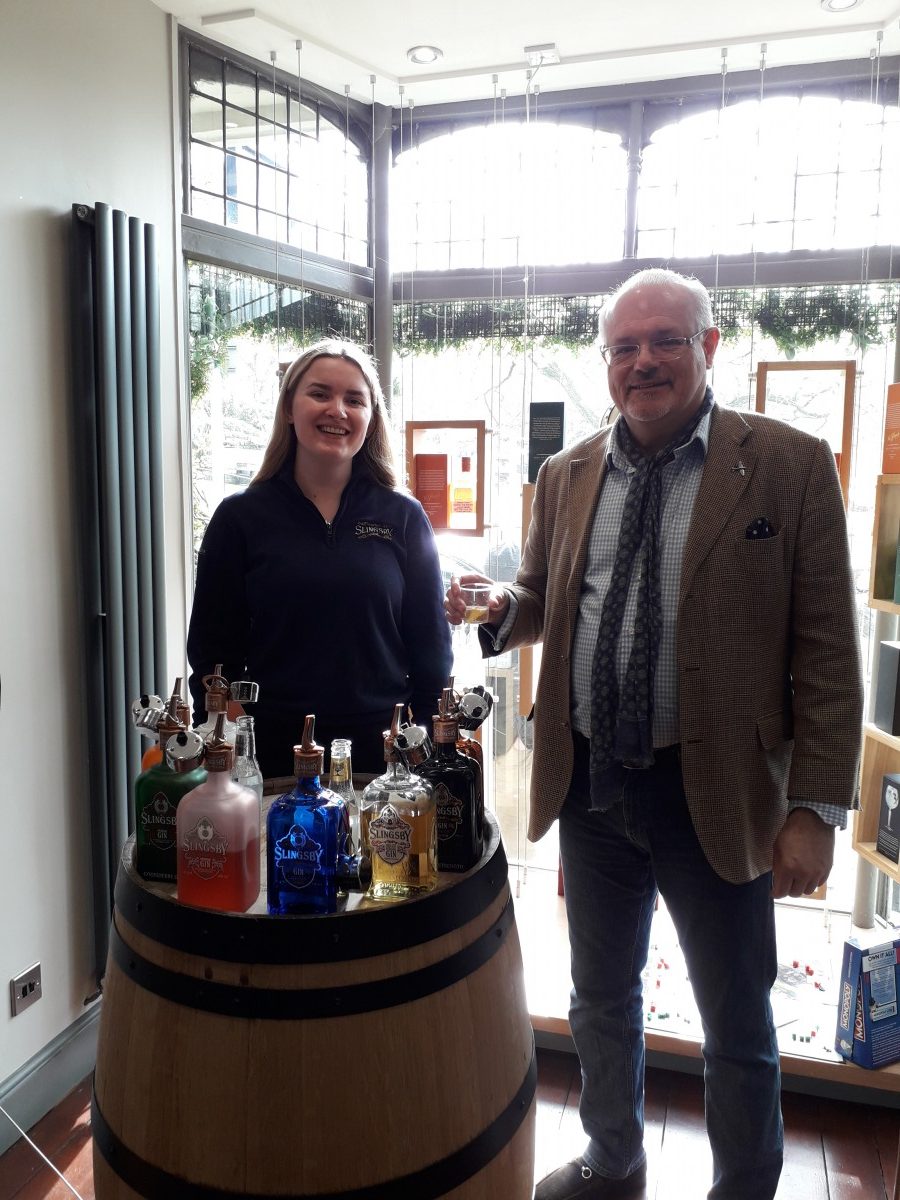
I confess that my real favourite remains the rhubarb gin. I have now compared this against, maybe, five others from other producers, but this remains in my opinion the nicest. It has a good colour, nice delicacy and is not too sweet. That said, all the flavours are very nice!
Five years since really starting Slingsby is gaining in popularity and now sells via many outlets – or you can order direct. A visit in person is recommended too, not only to sample/ buy (a bottle starts at around £40), but maybe attend one of their various events. The future? Well I think they are of a size now that has critical mass so hopefully the future is bright – the current Coronavirus crisis notwithstanding, but I fear that many of the scores of recent micro brands may not survive.
Chin chin!
P.S. Please drink responsibly – whatever that means!
Words and pictures The Writer, except Boyne Hill House image – Camphill Trust.

